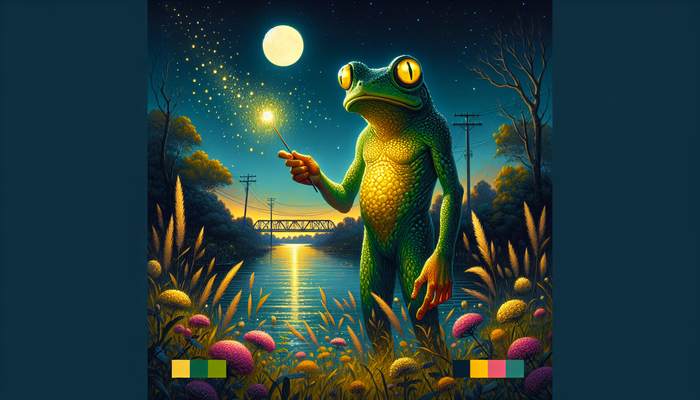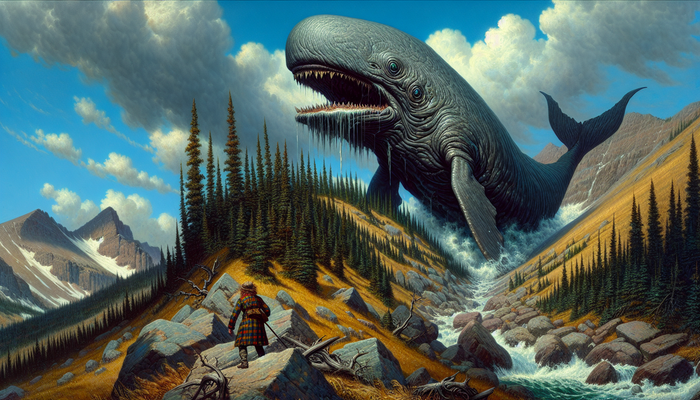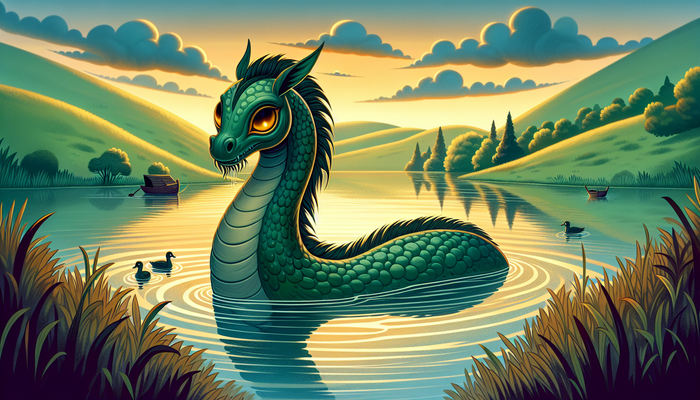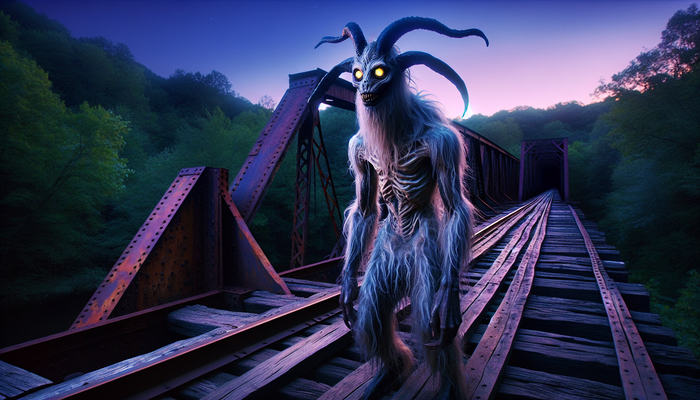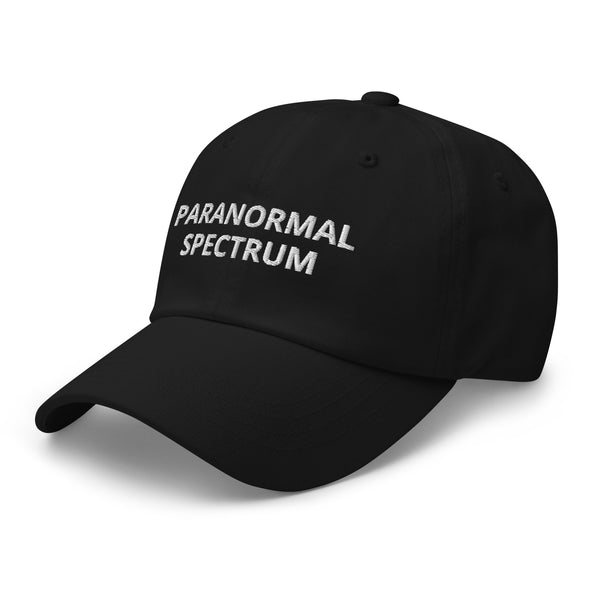Discover the Legend and Beauty of Goat Island Lake Worth

By James Roberts, Cryptozoologist
The Origins of Goat Island and Lake Worth
In the heart of Fort Worth, Texas, lies a hidden gem that has captured the imagination of locals and visitors alike for generations. Goat Island, nestled within the tranquil waters of Lake Worth, is more than just a picturesque spot for outdoor enthusiasts. It's a place where history, nature, and legend intertwine to create a tapestry of intrigue that continues to fascinate all who encounter it.
As you approach the island, the gentle lapping of water against the shore and the rustling of leaves in the breeze set the stage for an adventure that's both serene and mysterious. But don't let the calm fool you – beneath this peaceful exterior lies a story that has sent shivers down the spines of even the most skeptical visitors.
The tale of Goat Island begins with the creation of Lake Worth itself, a feat of engineering that transformed the landscape of Fort Worth in the early 20th century. Between 1911 and 1914, as the city's population boomed and the need for a reliable water source grew, Lake Worth was born. This man-made reservoir not only quenched the thirst of a growing metropolis but also gave rise to an unexpected island that would become the stuff of legend.
Goat Island's name has a quirky origin that speaks to the practical nature of early Texan settlers. In 1919, during a particularly harsh drought, two resourceful gentlemen decided to raft their goat herd to the newly formed island. This ingenious solution to a lack of grazing land not only saved their livestock but also christened the island with a name that would stick for over a century.
As the years passed, Goat Island evolved from a simple grazing ground to a beloved recreational area. Families would pack picnic baskets and spend lazy summer days exploring its shores, fishing in its waters, and enjoying the natural beauty that seemed a world away from the bustling city nearby. However, like many natural spaces, the island faced its share of challenges. Periods of neglect and environmental concerns threatened to mar its pristine landscape, but the resilient spirit of the community always brought it back from the brink.
The Legend of the Lake Worth Monster
It wasn't until the summer of 1969 that Goat Island would truly cement its place in local lore. As the world turned its eyes to the moon landing, the residents of Fort Worth found themselves captivated by a very different kind of otherworldly phenomenon. On a balmy July night, the first reported sighting of what would come to be known as the Lake Worth Monster, or Goatman, sent shockwaves through the community.
Witnesses described a creature that defied explanation – a seven-foot-tall behemoth weighing an estimated 350 pounds, with a body that seemed to be a nightmarish fusion of man and goat. Covered in a mix of fur and scales, this cryptid was said to possess strength that bordered on the supernatural. The initial encounter, reported by a group of terrified couples parked near Greer Island, spoke of the creature leaping onto their car and attempting to grab one of the women inside.
As word spread, more sightings followed, each more fantastical than the last. Perhaps the most infamous incident occurred when a group of witnesses, including several sheriff's deputies, claimed to have seen the monster hurl a car tire over 500 feet. This display of inhuman strength, coupled with reports of eerie, pitiful cries echoing across the lake, turned what might have been dismissed as a simple prank into a full-blown phenomenon.
Media Frenzy and Local Documentation
The media frenzy that ensued was unprecedented. Local newspapers ran headlines that could have been pulled from the pages of a pulp fiction novel: "Fishy Man-Goat Terrifies Couples Parked at Lake Worth." Reporters from as far away as New York and Los Angeles descended upon Fort Worth, eager to catch a glimpse of the creature or interview those who claimed to have seen it.
In the midst of this chaos, one local woman saw an opportunity to document the unfolding events. Sallie Ann Clarke, a Benbrook resident with a penchant for the paranormal, took it upon herself to compile eyewitness accounts, newspaper clippings, and her own observations into a book titled "The Lake Worth Monster of Greer Island." Published in September of 1969, mere months after the first sightings, Clarke's book became an instant local sensation and a cornerstone of the Goatman mythos.
Clarke's account of her own encounter with the creature is particularly vivid. She described it as a "goat-fish-man" standing nearly seven feet tall, covered in white hair and scales, emitting a cry that was "the most pathetic sound I have ever heard." Her book not only cataloged the various sightings but also speculated on the creature's origins and nature, fueling the imaginations of readers and solidifying the Lake Worth Monster's place in Texas folklore.
Skepticism and Explanations
As summer turned to fall and the initial fervor died down, skeptics began to offer more mundane explanations for the sightings. Some suggested that the creature was nothing more than a particularly large bobcat, while others pointed to the possibility of an escaped circus animal or even a gorilla that had survived a fire. The most prevalent theory, however, was that the whole affair was an elaborate hoax perpetrated by local high school students.
Despite the rational explanations, the legend of the Goatman had taken root in the collective consciousness of Fort Worth. Over the years, the story has been passed down from generation to generation, each retelling adding new layers to the myth. Today, the Lake Worth Monster is as much a part of the local culture as rodeos and barbecue.
Goat Island's Natural Beauty and Conservation Efforts
But Goat Island is more than just the setting for a cryptozoological tale. It's a vital ecosystem that plays host to a diverse array of flora and fauna. The island's landscape is a patchwork of post oak woodlands and floodplain hardwoods, creating a haven for wildlife in the midst of an urban environment. Egrets and owls make their homes among the branches, while the occasional alligator can be spotted sunning itself on the shore.
In recent years, conservation efforts have taken center stage in the story of Goat Island. The Fort Worth Nature Center and Refuge, which encompasses the area around Lake Worth, has been at the forefront of initiatives to preserve and protect this unique habitat. One of their most notable projects has been the designation of Goat Island as a monarch butterfly waystation, planting milkweed and other native species to support these endangered pollinators on their epic migrations.
Visitors to Goat Island today are encouraged to engage with the natural environment in a responsible manner. Kayaking around the island's perimeter offers a unique perspective on its rugged beauty, while hiking trails provide opportunities to spot wildlife and rare plant species. The Fort Worth Nature Center organizes regular clean-up events, inviting the community to participate in maintaining the island's pristine condition for future generations.
The Lake Worth Monster Bash
The enduring fascination with the Lake Worth Monster has not been lost on local officials. In a stroke of marketing genius, the Fort Worth Nature Center began hosting a "Lake Worth Monster Bash" every four years. This family-friendly event combines education about local ecosystems with a playful nod to the area's most famous cryptid. Attendees can participate in guided nature walks, learn about native wildlife, and even take part in a "Goatman calling" contest – all in good fun, of course.
While the Monster Bash is a lighthearted affair, it serves an important purpose in connecting people with the natural world around them. By using the legend as a hook, organizers are able to draw in visitors who might not otherwise be interested in environmental education. Once there, many find themselves captivated by the real-life wonders of Goat Island's ecosystem.
The Enduring Legacy of the Lake Worth Monster
The legend of the Lake Worth Monster continues to evolve, with new generations adding their own interpretations and experiences to the mix. Some modern-day cryptid hunters armed with night vision cameras and audio recording equipment still venture out to Goat Island, hoping to capture evidence of the elusive Goatman. While their efforts have yet to produce definitive proof, the thrill of the hunt keeps the legend alive.
Local residents have their own theories about the creature's existence. Some swear by the original eyewitness accounts, pointing to the sheer number of sightings and the credibility of some witnesses, including law enforcement officers. Others take a more skeptical view, seeing the Goatman as a product of its time – a manifestation of the cultural anxieties and fascinations of the late 1960s.
Regardless of one's belief in the supernatural, the impact of the Lake Worth Monster on the community is undeniable. It has become a shared cultural touchstone, a story that brings people together and sparks conversations. Local businesses have embraced the legend, with Goatman-themed merchandise and menu items popping up in shops and restaurants around Fort Worth.
Scientific Interest and Cultural Impact
The scientific community has also taken an interest in the phenomenon, albeit from a different angle. Folklorists and sociologists have studied the Lake Worth Monster as a case study in how urban legends form and spread. The story's persistence over five decades provides valuable insights into the role of myth-making in modern society and the human need for mystery and wonder in an increasingly explained world.
For cryptozoology enthusiasts, the Lake Worth Monster represents a tantalizing possibility – could there really be an unknown creature lurking in the waters and woods of North Texas? While mainstream science remains skeptical, organizations like the Texas Bigfoot Research Center continue to investigate reports of strange creatures in the region, including occasional Goatman sightings.
The Legend in the Digital Age
One of the most intriguing aspects of the Lake Worth Monster legend is how it has adapted to the digital age. Social media platforms and online forums have become hotbeds of Goatman discussion, with users sharing their own encounters and theories. This digital word-of-mouth has introduced the story to a new generation, ensuring that the legend will continue to thrive in the 21st century.
The Fort Worth Nature Center has embraced this digital shift, using social media to educate the public about the real wildlife of Goat Island while playfully acknowledging the Goatman legend. Their "Creature Feature" posts highlight native species that call the island home, often with a wink and a nod to their more famous cryptid neighbor.
The Future of Goat Island and Its Legend
As we look to the future, the fate of Goat Island and its legendary inhabitant remains intertwined with the broader challenges facing urban green spaces. Climate change, habitat loss, and pollution all pose threats to the delicate ecosystem of Lake Worth. Conservation efforts will be crucial in preserving this natural oasis for future generations to enjoy – and perhaps to continue the search for the elusive Goatman.
The story of Goat Island and the Lake Worth Monster is more than just a tale of a mysterious creature. It's a narrative that encompasses the history of a growing city, the importance of natural spaces in urban environments, and the enduring power of folklore to shape a community's identity. Whether you're a skeptic or a true believer, a nature enthusiast or a thrill-seeker, Goat Island has something to offer.
As you stand on the shore of Lake Worth, gazing out at the island that has captured the imagination of so many, it's hard not to feel a sense of wonder. The rustling leaves and lapping waves might just be hiding secrets yet to be discovered. And who knows? On a quiet night, with the moon hanging low over the water, you might just hear a strange cry echoing across the lake – a reminder that sometimes, the most captivating mysteries are the ones that remain unsolved.
Visiting Goat Island
For those inspired to explore Goat Island and immerse themselves in its rich tapestry of nature and legend, there are numerous resources available. The Fort Worth Nature Center offers guided tours that provide in-depth information about the island's ecology and history. Local libraries carry a selection of books on the Lake Worth Monster, including Sallie Ann Clarke's original account and more recent works that examine the legend from historical and sociological perspectives.
Visitors are encouraged to approach Goat Island with a spirit of respect and conservation. The "Leave No Trace" principles are essential for preserving the island's natural beauty. Kayakers and hikers should stick to designated areas and avoid disturbing wildlife. And while the temptation to go "monster hunting" may be strong, it's important to remember that the real treasure of Goat Island lies in its vibrant ecosystem and the sense of connection to nature it provides.
As you plan your visit, consider timing it to coincide with one of the many events hosted by the Fort Worth Nature Center. From bird-watching expeditions to native plant workshops, these programs offer unique insights into the island's natural wonders. And of course, if you're lucky enough to be in town for the Lake Worth Monster Bash, you'll experience a celebration that perfectly blends education, conservation, and good old-fashioned Texas tall tales.
In the end, whether you come to Goat Island seeking glimpses of rare wildlife, a peaceful escape from city life, or a chance encounter with a legendary cryptid, you're sure to leave with a deeper appreciation for this unique corner of Texas. The legend of the Lake Worth Monster may have put Goat Island on the map, but it's the island's natural beauty and the dedication of those who protect it that will ensure its place in the hearts of visitors for generations to come.
From Bigfoot to UFOs: Hangar 1 Publishing Has You Covered!
Explore Untold Stories: Venture into the world of UFOs, cryptids, Bigfoot, and beyond. Every story is a journey into the extraordinary.
Immersive Book Technology: Experience real videos, sights, and sounds within our books. Its not just reading; its an adventure.


